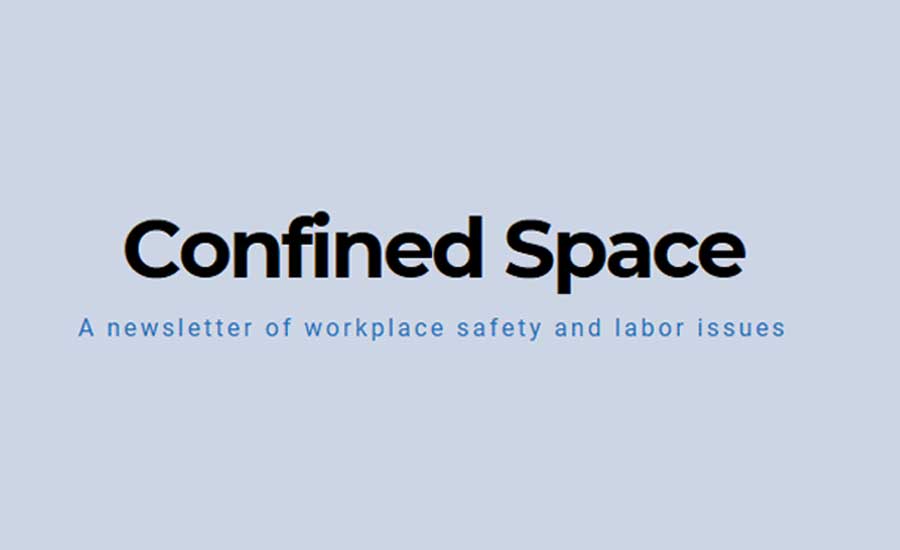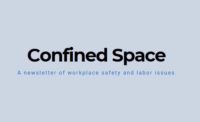Posted with permission from Confined Space, a newsletter of workplace safety and labor issues.
Elon Musk, owner of SpaceX and Tesla is a seriously strange and driven guy. That can be a good thing in some circumstances and even amusing if it’s your next door neighbor or crazy uncle. But when you own a major car company, it can mean workers getting hurt or killed. Last May we wrote about a report chronicling Tesla’s poor safety record. And things apparently aren’t getting any better.
After interviewing more than three dozen current and former employees and managers — including five former members of its environment, health and safety team — and reviewing hundreds of pages of documents, a major investigative piece by Will Evans and Alyssa Jeong Perry at Reveal and the Center for Investigative reporting found that Tesla is ignoring major health and safety issues in their Fremont, California plant and is making the company’s injury numbers look better than they actually are by repeatedly failing to report some of its serious injuries on legally mandated OSHA reports.
Why? Production over safety: “Everything took a back seat to production,” according to Justine White, a former safety lead, “It’s just a matter of time before somebody gets killed.”
Almost every day there is an article describing Tesla’s failure to meet its self imposed deadline for delivery of its moderately priced Model 3. And Musk seems to be taking it out on his employees.
Elon Doesn’t Want Signs
And second, as I mentioned above, Elon Musk is a seriously weird guy who doesn’t like yellow lines on the floor (that set pedestrian safety lanes to avoid fork lifts) or clutter caused by safety signs, or noise caused by back-up beepers. So unpleasant!
In her March 2017 resignation letter, White recounted the time she told her boss, Seth Woody, “that the plant layout was extremely dangerous to pedestrians.” Woody, head of the safety team, told her “that Elon didn’t want signs, anything yellow (like caution tape) or to wear safety shoes in the plant” and acknowledged it “was a mess,” she wrote.
So what are we talking about? Exposure to un-monitored toxic chemicals, heavy manual lifting because mechanical lifts are too slow, lack of training, musculoskeletal injuries and on and on.
| Elon didn’t want signs, anything yellow (like caution tape) or to wear safety shoes in the plant |
There’s this:
Last April, Tarik Logan suffered debilitating headaches from the fumes of a toxic glue he had to use at the plant. He texted his mom: “I’m n hella pain foreal something ain’t right.” The searing pain became so unbearable he couldn’t work, and it plagued him for weeks.
But Logan’s inhalation injury, as it was diagnosed, never made it onto the official injury logs that state and federal law requires companies to keep. Neither did reports from other factory workers of sprains, strains and repetitive stress injuries from piecing together Tesla’s sleek cars. Instead, company officials labeled the injuries personal medical issues or minor incidents requiring only first aid, according to internal company records obtained by Reveal.
And this:
When building Tesla’s other cars, former workers said they had to sacrifice their bodies to save time. Some workers, for example, lifted heavy car seats over their shoulders because the mechanical assists designed to ease the load were too slow, said Joel Barraza, a former production associate.
“People would carry a seat because they’d be like, ‘Oh, I gotta get this done.’ I personally carried a seat,” Barraza said. “They’re supposed to move. Move it on, move it on, keep the line going.”
White, the former safety lead, also said workers sometimes lifted seats manually, but Tesla, in a statement, said it doesn’t happen.
| A former Tesla safety professional … said the company systematically undercounted injuries by mislabeling them |
And this:
A former Tesla safety professional … said the company systematically undercounted injuries by mislabeling them. “I saw injuries on there like broken bones and lacerations that they were saying were not recordable” as injuries, said the safety professional, who asked to remain anonymous. “I saw a lot of stuff that was like, ‘Wow, this is crazy.’ ”
Even where supervisors labeled an injury job-related, it often didn’t get recorded on OSHA logs:
For a dozen examples provided to the company by Reveal, Tesla stood by its decision to not count them. It said workers may have thought they were injured because of their jobs, and supervisors may have assumed the same. But later, Tesla said, a medical professional – sometimes contracted or affiliated with the company – determined there was no connection to work.
| “It’s just a matter of time before somebody gets killed.” – Justine White, former Tesla safety lead |
And then there are injuries suffered by temporary workers. Companies must count those injuries if they supervise the temps:
At one point, though, White said she asked her supervisor why the injury rate seemed off, and he told her they weren’t counting temp worker injuries.
“They knew they were reporting incorrect numbers,” White said. “Those workers were being injured on the floor and that wasn’t being captured, and they knew that.”
Tesla began to fix that problem in 2017, former employees said, but it’s unclear how consistently.
After workers requested the company’s injury logs last year, Tesla amended its original 2016 report to add 135 injuries that hadn’t been counted previously. The company said it changed the numbers after it discovered injuries that hadn’t been shared with Tesla by its temp agencies.
Average Isn’t Good Enough…Until It Is
Now, we wrote about the health and safety problems at Tesla last year after Worksafe, a California-based organization that works to prevent injury, illness, and death, issued a report finding that the rate of serious worker injuries at Tesla’s Fremont, California plant was approximately double the auto industry rate for 2015. Tesla rebutted that in 2017, Tesla’s overall injury rate was dramatically better in the first quarter of the year. And Musk later stated that even being “average” wasn’t good enough for him. He wanted to be better than average:
Last year, Musk claimed in a staffwide email and at a shareholder meeting that the company’s injury rate was much better than the industry average. A company blog post said that to be average would be “to go backwards.”
Then Tesla apparently did hit reverse.
“Our 2017 data showed that we are at industry average, so we’re happy about that,” Shelby said, explaining the earlier claims as a “snapshot in time.”
A Calculated Disinformation Campaign Driven by Extremists
So how did Tesla respond to the Reveal investigation? Maybe something like “thanks for pointing out these serious problems. We will do whatever is necessary, no matter the cost, to fix them?”
Not exactly. More like a statement accusing Reveal of being a tool in an ongoing unionization drive and portraying “a completely false picture of Tesla and what it is actually like to work here.”
“In our view, what they portray as investigative journalism is in fact an ideologically motivated attack by an extremist organization working directly with union supporters to create a calculated disinformation campaign against Tesla.”
Well at least they didn’t call the Reveal journalists “slime bags.”
The UAW has been trying to organize the plant for some time. The authors of the article noted that “Some of the workers who spoke to Reveal have supported the unionization effort, while many others – including safety professionals – had no involvement.”
Volks Redux
And one more thing that wasn’t mentioned in the article. You all may remember last March when Congress repealed OSHA’s Volks regulation that would have allowed OSHA to continue enforcing a requirement that employers maintain accurate injury and illness records for a period of five years. What that means is that in this case, let’s say OSHA launches an inspection of Tesla on May 1 and finds dozens or hundreds of cases of chronically and deliberately inaccurate recording of injuries and illnesses over the past five years. And let’s say it then takes OSHA four months to issue a citation. Due to the repeal of the Volks rule, OSHA would only be able to cite inaccurate recordkeeping for the months of March and April 2018, and most like issue a tiny penalty.
As we’ve described before, OSHA has in the past used large recordkeeping citations to drive major health and safety improvements in large companies and throughout entire industries. But no more. Thanks Trump (and Ryan and McConnell)
Now, of course, Tesla is in California and is under CalOSHA’s authority, not federal OSHA’s authority. It’s unclear to me whether the Volks case, which limited OSHA recordkeeping citations to six months, applies in California. (Those who know the answer, feel free to use the comment link below.)
I Can’t Sleep Here at Tesla
Former safety lead Justine White’s story says everything there is to say about Tesla’s approach to workplace safety:
A few months into her job, White became so alarmed that she wrote to a human resources manager that “the risk of injury is too high. People are getting hurt every day and near-hit incidents where people are getting almost crushed or hit by cars is unacceptable.”
The next day, she emailed Sam Teller, Musk’s chief of staff, that safety team leaders were failing to address the hazards.
“I know what can keep a person up at night regarding safety,” she wrote. “I must tell you that I can’t sleep here at Tesla.”
She said she never heard back from Musk’s office. She transferred departments and quit a couple months later, disillusioned.
Meanwhile, we hear that CalOSHA has opened a new inspection at Tesla.
Click here to visit Confined Space.
Click here to donate to Confined Space.


